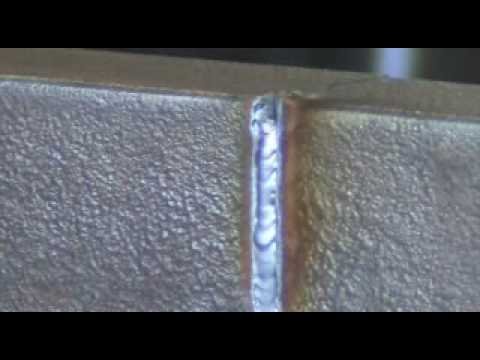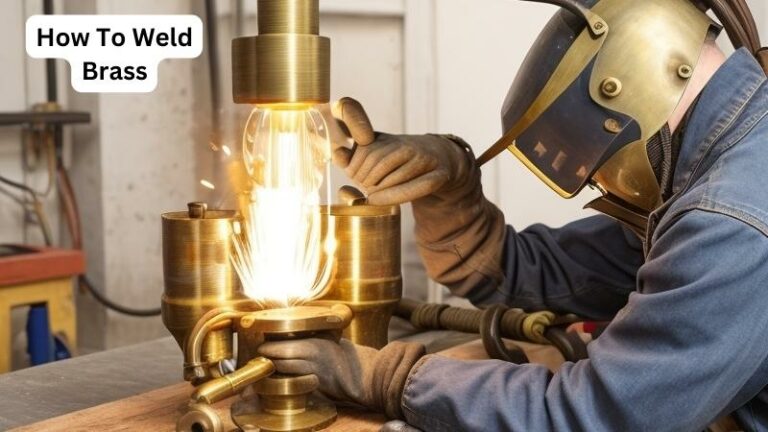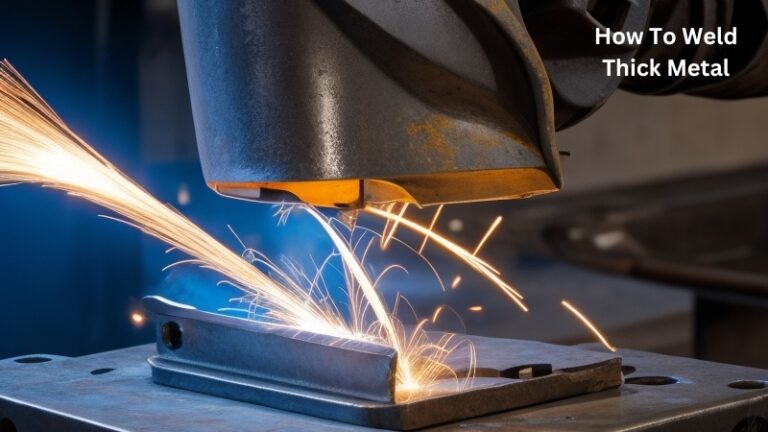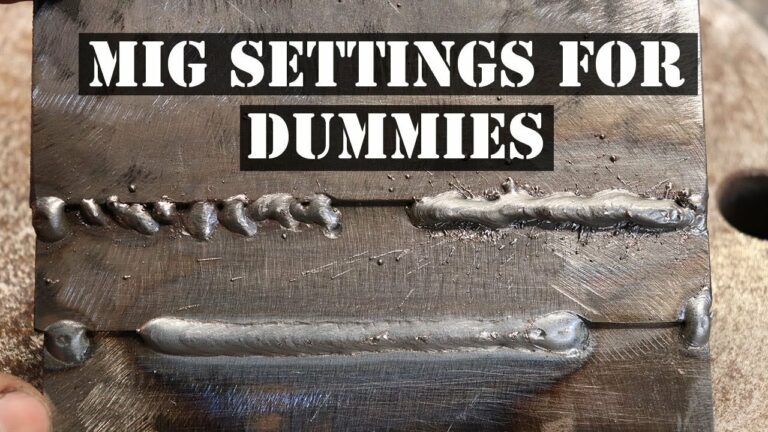Master The Art Of Welding: How To Weld Two Pieces Of Metal Together
Looking to join two metal pieces together? Welding is the solution you need! This versatile technique can create strong and durable bonds, making it essential for countless applications. Whether you’re a DIY enthusiast or a professional welder, learning how to weld two pieces of metal together is a valuable skill to have. In this article, we’ll guide you through the process step-by-step, explaining the different types of welding methods and providing practical tips along the way. So, get ready to roll up your sleeves and embark on an exciting journey into the world of welding!
How to Weld Two Pieces of Metal Together
Gathering the Tools and Materials
To successfully weld two pieces of metal together, you will need the following tools and materials:
- Welding machine
- Welding helmet
- Welding gloves
- Protective clothing
- Welding electrodes
- Wire brush
- Clamps
- Angle grinder
- Safety goggles
- Marking tools
Preparing the Metal
Before starting the welding process, it is essential to properly prepare the metal surfaces:
Cleaning the Surfaces
- Use a wire brush to remove dirt, rust, and paint from the metal surfaces.
- If needed, use an angle grinder to smooth out any rough edges or welds from previous work.
- Make sure the surfaces are completely clean and free from any contaminants.
Marking the Welding Area
- Use marking tools to clearly indicate the areas where the metal pieces will be joined together.
- Accurate markings will help guide your welding process.
Choosing the Right Welding Technique
There are several welding techniques available, and selecting the appropriate one for your project is crucial. Here are a few common welding methods:
Stick Welding (Shielded Metal Arc Welding)
- Stick welding is an ideal choice for outdoor applications or when working with thick metal.
- It requires a welding machine that uses a consumable electrode, or a “stick,” coated in flux.
- The stick is melted as it creates an arc between the metal and the electrode, forming the weld.
- This technique provides strong and durable welds.
MIG Welding (Metal Inert Gas Welding)
- MIG welding is suitable for a wide range of applications and metals.
- It uses a solid wire electrode and a shielding gas to protect the weld from atmospheric contamination.
- MIG welding results in clean and precise welds.
TIG Welding (Tungsten Inert Gas Welding)
- TIG welding produces high-quality welds and is commonly used for delicate or precise projects.
- It uses a non-consumable tungsten electrode and a shielding gas.
- Additional filler material can be added manually to create the weld.
Setting Up the Welding Machine
Properly setting up the welding machine is crucial for a successful weld:
Selecting the Correct Electrode
- Refer to the welding machine’s manual to determine the appropriate electrode for your project.
- Choose an electrode that matches the type and thickness of the metal being welded.
Adjusting the Amperage
- Consult the welding machine’s specifications to determine the recommended amperage for your chosen electrode and metal thickness.
- Adjust the amperage accordingly on the welding machine.
Testing the Welding Machine
- Before starting the actual welding process, perform a test run on a scrap piece of metal.
- Ensure the welder is functioning correctly and producing the desired results.
Executing the Welding Process
Now that everything is set up, it’s time to weld the two pieces of metal together:
Securing the Metal
- Use clamps or other appropriate methods to hold the metal pieces firmly in place.
- Ensure the pieces are perfectly aligned for a strong and accurate weld.
Starting the Arc
- Put on your welding helmet and protective clothing.
- Hold the welding electrode or welding gun firmly and create an arc by touching it to the metal.
- Once the arc is established, you can begin the welding process.
Welding Techniques
- Move the welding electrode or gun in a consistent and controlled manner along the marked welding area.
- Ensure the arc remains stable and the weld puddle is evenly formed.
- Pay close attention to the weld bead and adjust the speed and angle as needed to achieve the desired weld quality.
Finishing the Weld
- Once you have completed the weld, allow it to cool gradually.
- Remove any slag or residue using a wire brush.
- Inspect the weld for any imperfections or missed spots.
Ensuring Safety
Welding involves working with high temperatures and potentially harmful materials. It is imperative to prioritize safety:
Protective Gear
- Always wear a welding helmet, gloves, and appropriate clothing to safeguard yourself from sparks and UV radiation.
- Invest in high-quality safety goggles to protect your eyes.
- Ensure that your work area is properly ventilated to reduce exposure to fumes and gases.
Fire Prevention
- Keep a fire extinguisher nearby in case of any welding-related fires.
- Clear the work area of any flammable materials.
- Have a designated fire-safe area for hot work.
Electrical Safety
- Ensure that the welding machine is suitably grounded to prevent electrical shocks.
- Avoid welding near water or damp surfaces.
Practice Makes Perfect
Welding is a skill that improves with practice. Take the time to hone your welding techniques, experiment with different metals and thicknesses, and learn from experienced welders. Remember, safety should always be your top priority.
Remember to check your equipment regularly and take proper care of your welding machine and accessories. With dedication and practice, welding two pieces of metal together will become a smooth and rewarding process. Happy welding!
(Note: This article is intended as a guide and does not replace professional instruction or experience. Always follow proper safety protocols and seek expert advice for your specific welding needs.)
Steel bar , two powerful joint welding tricks that few people know about
Frequently Asked Questions
What safety precautions should I take when welding two pieces of metal together?
When welding two pieces of metal together, it is important to prioritize safety. Wear appropriate protective gear such as welding gloves, a welding helmet with a dark visor, and flame-resistant clothing. Make sure your work area is well-ventilated and free from flammable materials. Check your equipment for any defects or malfunctions before starting. Also, be cautious of the intense heat generated during welding and avoid touching hot surfaces to prevent burns.
What types of welding methods can be used to join two pieces of metal together?
There are several welding methods you can use to join two pieces of metal together. Common methods include MIG (Metal Inert Gas) welding, TIG (Tungsten Inert Gas) welding, and stick welding (SMAW). The choice of method depends on factors such as the type and thickness of the metal, the desired strength of the weld, and the skill level of the welder. Each method has its own advantages and considerations, so it is important to choose the one that best suits your specific needs.
What type of welding machine should I use for joining two metal pieces?
The type of welding machine you should use depends on the welding method you are employing. For MIG welding, you will need a MIG welder that uses a wire electrode to create the weld. TIG welding requires a TIG welder that uses a tungsten electrode to produce the weld. Stick welding, on the other hand, entails using a stick welder (also known as a shielded metal arc welder) that uses a consumable electrode coated in flux. It’s important to select a welding machine that matches the welding method you intend to use.
Is it necessary to clean the metal surfaces before welding them together?
Yes, it is crucial to clean the metal surfaces before welding them together. Metal surfaces can contain contaminants such as dirt, grease, rust, or paint, which can negatively affect the quality of the weld. Use a wire brush or a grinder to remove any debris or coatings from the surfaces that will be welded. This will ensure better fusion and a stronger bond between the two metal pieces. Remember to take precautions and wear protective gloves and goggles while cleaning the metal surfaces.
What factors should I consider when selecting the appropriate welding consumables?
When selecting welding consumables, consider factors such as the type of metal being welded, the welding method being used, and the desired strength and appearance of the weld. Different welding consumables, such as electrodes and filler wires, are designed for specific applications and materials. Refer to the manufacturer’s recommendations or consult with a welding specialist to ensure you are using the appropriate consumables for your specific welding project.
What are some common welding defects and how can I prevent them?
Common welding defects include porosity, undercutting, incomplete fusion, and weld cracks. To prevent these defects, ensure that the metal surfaces are clean and free from contaminants. Use the appropriate welding technique and maintain a consistent arc length and travel speed. Adequately shield the weld area from drafts to prevent contamination. Properly control the heat input to avoid overheating the metal. Regularly inspect and test your welds to identify any defects and take necessary corrective measures.
Final Thoughts
In conclusion, mastering the art of welding is crucial for effectively joining two pieces of metal together. By following the correct procedures, such as preparing the surfaces, selecting the appropriate welding technique, and ensuring a secure bond, one can achieve strong and durable welds. Additionally, maintaining safety precautions, such as wearing protective gear and working in well-ventilated areas, is essential to prevent accidents and health hazards. With practice and attention to detail, anyone can become proficient in the skill of welding and successfully connect two metal pieces, creating a solid and reliable joint.



